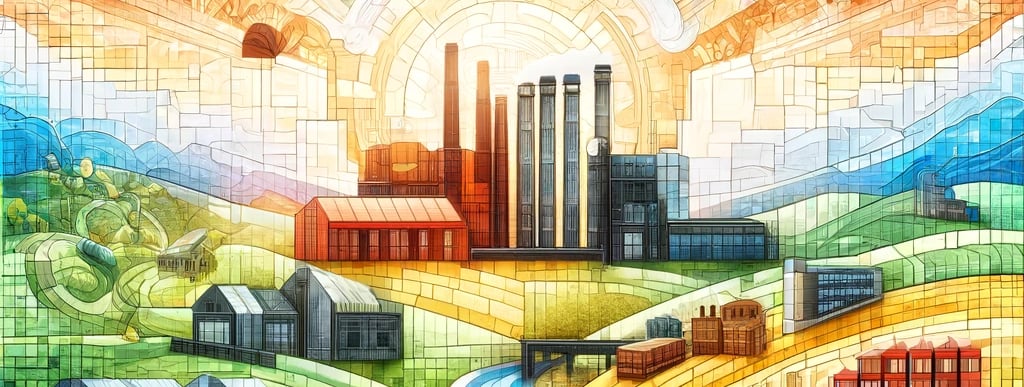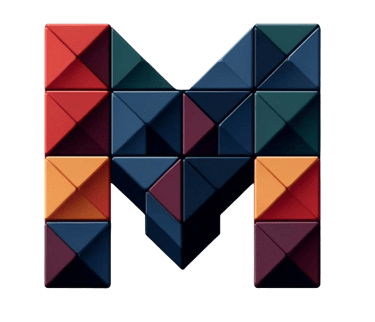Definition of Supply Chain Management
This is the blog's version.
SUPPLY CHAIN INSIGHTS
5/23/20244 min read


Defining Supply Chain Management is something particular, complex, just as the sector itself and the set of activities that compose it.
Even the simple fact of not having a single, unified definition allows the mind to wander and give its own vision of this sphere.
Supply chain management represents a complex and interconnected system that involves all phases from the production to the distribution of goods and services. This process includes a series of activities ranging from the procurement of raw materials, production, storage, transportation, all the way to the final delivery to the consumer.
Each phase of the supply chain is closely linked to the others, creating a dynamic and interdependent network that requires careful and coordinated management.
The first definitions of Supply Chain Management emerged in the early 1980s. Furthermore, this concept is still confused or assimilated with Logistics, giving rise to four different concepts (Traditionalist, Re-labeling, Unionist, Intersectionist).
However, by the 1990s, the term SCM began to be generally recognized and defined, also following globalization and the growing complexity of supply networks.
The CSCMP (Council of Supply Chain Management Professionals) has given this definition: "Supply chain management encompasses the planning and management of all activities involved in sourcing and procurement, conversion, and all logistics management activities. Importantly, it also includes coordination and collaboration with channel partners, which can be suppliers, intermediaries, third party service providers, and customers. In essence, supply chain management integrates supply and demand management within and across companies."
The definition given by Alberto (me) is more artistic, as from the presentation of the blog, I want to give a different definition: "Imagine the Supply Chain like a Mosaic in constant motion, composed of few big pieces, with different colors, but composing a clear image.
Every mosaic tile represents a department or process of the SC. When everything works properly (or nearly properly), these tiles are aligned and they form a perfectly aligned and beautiful mosaic.
Otherwise, if only one department meets something along the way, the tiles begin to move away and rotate, leading to an overall image that is not comprehensible."
This serves to distance itself from the idea of a chain, where every gear corresponds to a function or sub-function.
The stopping of a single gear leads to the halting of the entire chain; this is not always true.
Some functions may have a downtime (hopefully temporary and very brief), but the other functions, if the right caution has been used, could continue to operate (e.g., until the stock runs out or until the next distribution request, or the procurement department can continue to operate despite the production lines and IB and OB logistics being stopped), thus creating the detachment of one function and maintaining a more or less intact, but less harmonious image, which tends to lose meaning. A tile of the mosaic that moves.
However, I must specify that this definition can in no way reflect a Lean or JIT methodology (Just in Time, which we will see later in an article dedicated to methodologies).
A fundamental aspect of the supply chain is its dynamic nature. Every function influences and is influenced by the others, making the ability to adapt quickly to changes crucial.
For example, a variation in market demand may require immediate adjustments in production and logistics. Similarly, disruptions in raw material supply can have ripple effects throughout the supply chain, slowing down production and delaying deliveries.
Each tile of the mosaic represents a key element of the system, and the synergy between these elements is essential to ensure the efficient and harmonious functioning of the supply chain. It emphasizes the importance of considering every component as part of a larger whole, promoting integrated and flexible management that can effectively respond to market challenges and opportunities.
Such a holistic approach not only improves operational efficiency but also fosters greater supply chain resilience, allowing companies to successfully face uncertainties and fluctuations in demand. The idea of a supply chain as a mosaic in motion underscores the need for a strategic vision and continuous collaboration between all actors involved, from the supplier to the final consumer
What's the purpose of Supply Chain?
In the dynamic and complex landscape of the supply chain, the primary goals are system resilience and efficiency. The philosophy of MosaicMotion stands out for its integrated approach aimed at achieving both of these objectives, emphasizing the importance of a flexible and responsive system. Resilience in the supply chain refers to an organization's ability to quickly adapt to changes and recover from disruptions. MosaicMotion promotes supplier diversification strategies, which allow companies to reduce dependency on individual suppliers and mitigate risks associated with unforeseen events.
Another key component of resilience is the adoption of advanced technologies. Through the use of predictive analytics and artificial intelligence tools, MosaicMotion enables companies to anticipate potential issues and respond proactively. These technologies enhance visibility along the entire supply chain, facilitating risk management and crisis response planning. Additionally, the integration of real-time monitoring systems ensures constant oversight of operations, guaranteeing a swift and efficient response.
As for efficiency, MosaicMotion adopts lean management practices aimed at eliminating waste and optimizing resources. This approach results in reduced operational costs and improved productivity. Process automation plays a crucial role in this context, as it speeds up operations and reduces human errors. Automation technologies, such as collaborative robots and automated management software, help create a more streamlined and effective workflow.
In summary, the philosophy of MosaicMotion represents a mosaic in motion that, through innovative strategies and advanced technologies, aims to build a resilient and efficient supply chain. The combination of supplier diversification, adoption of advanced technological tools, and the application of lean and automation practices makes it possible to tackle modern challenges and ensure operational continuity and long-term success.


